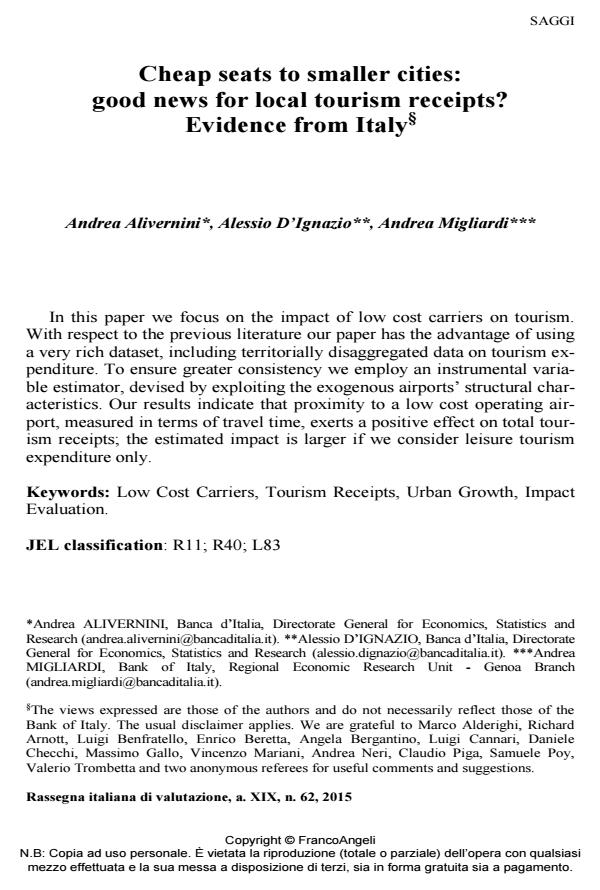Cheap seats to smaller cities: good news for local tourism receipts? Evidence from Italy
Titolo Rivista RIV Rassegna Italiana di Valutazione
Autori/Curatori Andrea Alivernini, Alessio D'Ignazio, Andrea Migliardi
Anno di pubblicazione 2016 Fascicolo 2015/62
Lingua Inglese Numero pagine 21 P. 9-29 Dimensione file 542 KB
DOI 10.3280/RIV2015-062003
Il DOI è il codice a barre della proprietà intellettuale: per saperne di più
clicca qui
Qui sotto puoi vedere in anteprima la prima pagina di questo articolo.
Se questo articolo ti interessa, lo puoi acquistare (e scaricare in formato pdf) seguendo le facili indicazioni per acquistare il download credit. Acquista Download Credits per scaricare questo Articolo in formato PDF

FrancoAngeli è membro della Publishers International Linking Association, Inc (PILA)associazione indipendente e non profit per facilitare (attraverso i servizi tecnologici implementati da CrossRef.org) l’accesso degli studiosi ai contenuti digitali nelle pubblicazioni professionali e scientifiche
In this paper we focus on the impact of low cost carriers on tourism. With respect to the previous literature our paper has the advantage of using a very rich dataset, including territorially disaggregated data on tourism expenditure. To ensure greater consistency we employ an instrumental variable estimator, devised by exploiting the exogenous airports’ structural characteristics. Our results indicate that proximity to a low cost operating airport, measured in terms of travel time, exerts a positive effect on total tourism receipts; the estimated impact is larger if we consider leisure tourism expenditure only.
Parole chiave:Low Cost Carriers, Tourism Receipts, Urban Growth, Impact Evaluation.
Jel codes:R11; R40; L83
- LLimpatto di un nuovo aeroporto sul turismo internazionale: il caso di Ragusa (The Impact of a New Airport on International Tourism: The Case of Ragusa (Sicily)) Francesco David, Giuseppe Saporito, in SSRN Electronic Journal /2017
DOI: 10.2139/ssrn.3120489
Andrea Alivernini, Alessio D'Ignazio, Andrea Migliardi, Cheap seats to smaller cities: good news for local tourism receipts? Evidence from Italy in "RIV Rassegna Italiana di Valutazione" 62/2015, pp 9-29, DOI: 10.3280/RIV2015-062003